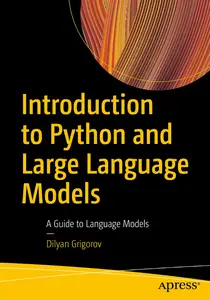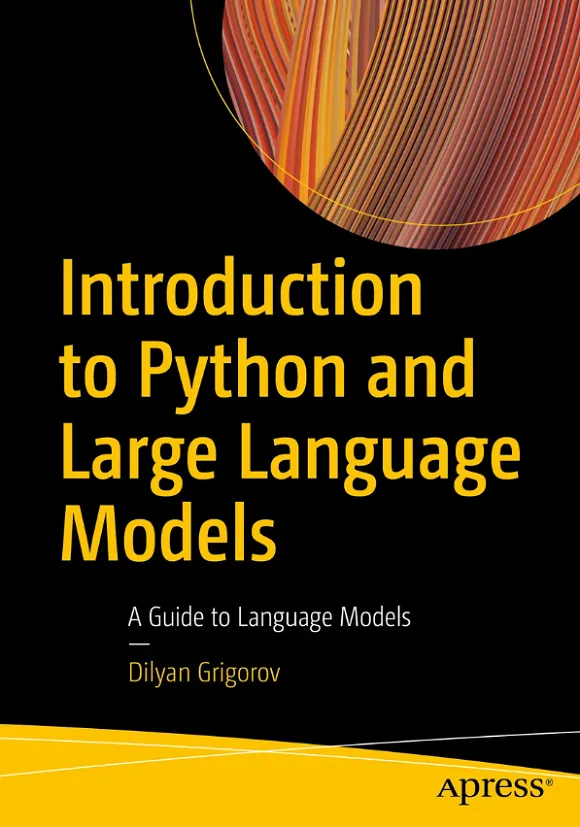Introduction to Python and Large Language Models: A Guide to Language Models
English | 2024 | ASIN: B0D7RLKTFT | 395 pages | PDF | 4.43 MB
English | 2024 | ASIN: B0D7RLKTFT | 395 pages | PDF | 4.43 MB
Gain a solid foundation for Natural Language Processing (NLP) and Large Language Models (LLMs), emphasizing their significance in today’s computational world. This book is an introductory guide to NLP and LLMs with Python programming.
The book starts with the basics of NLP and LLMs. It covers essential NLP concepts, such as text preprocessing, feature engineering, and sentiment analysis using Python. The book offers insights into Python programming, covering syntax, data types, conditionals, loops, functions, and object-oriented programming. Next, it delves deeper into LLMs, unraveling their complex components.
You’ll learn about LLM elements, including embedding layers, feedforward layers, recurrent layers, and attention mechanisms. You’ll also explore important topics like tokens, token distributions, zero-shot learning, LLM hallucinations, and insights into popular LLM architectures such as GPT-4, BERT, T5, PALM, and others. Additionally, it covers Python libraries like Hugging Face, OpenAI API, and Cohere. The final chapter bridges theory with practical application, offering step-by-step examples of coded applications for tasks like text generation, summarization, language translation, question-answering systems, and chatbots.
In the end, this book will equip you with the knowledge and tools to navigate the dynamic landscape of NLP and LLMs.
What You’ll Learn
Understand the basics of Python and the features of Python 3.11
Explore the essentials of NLP and how do they lay the foundations for LLMs.
Review LLM components.
Develop basic apps using LLMs and Python.
Who This Book Is For
Data analysts, AI and Machine Learning Experts, Python developers, and Software Development Professionals interested in learning the foundations of NLP, LLMs, and the processes of building modern LLM applications for various tasks.



